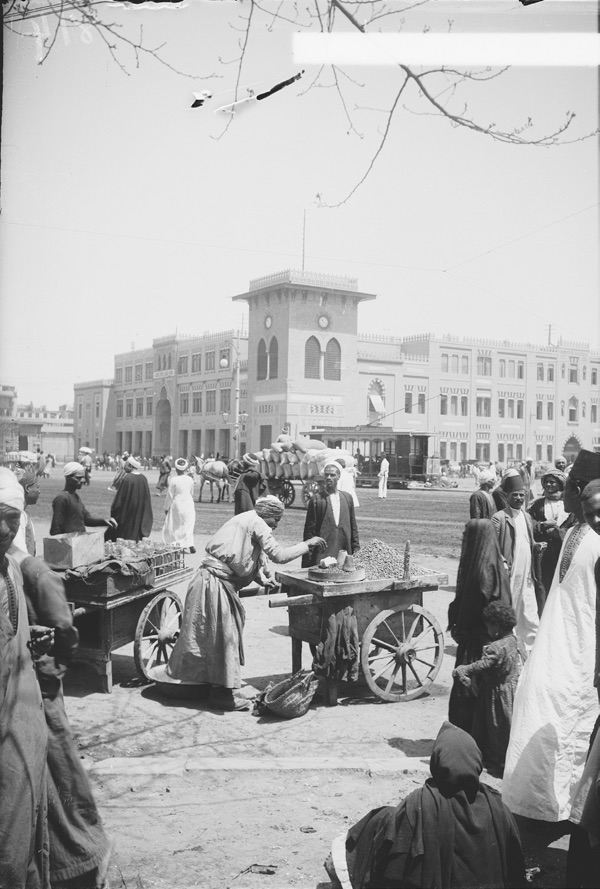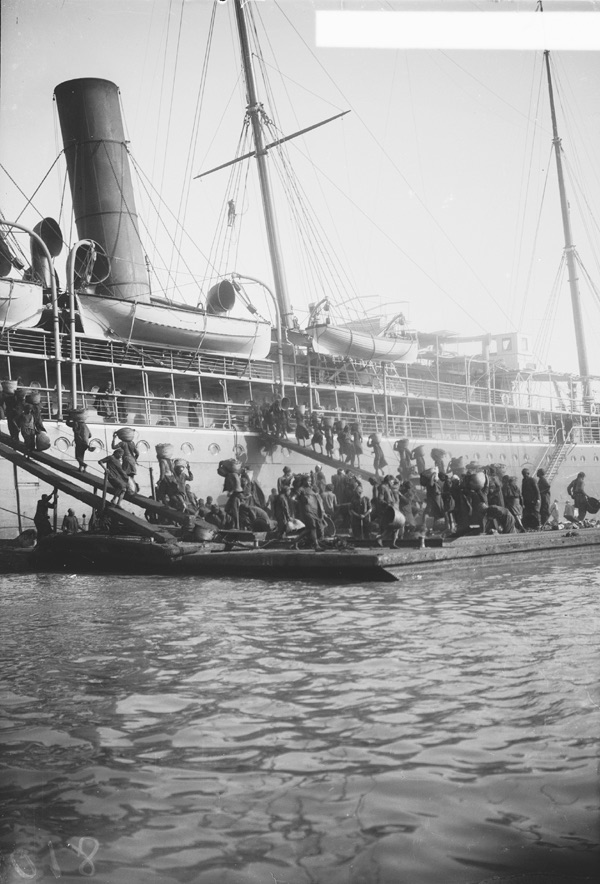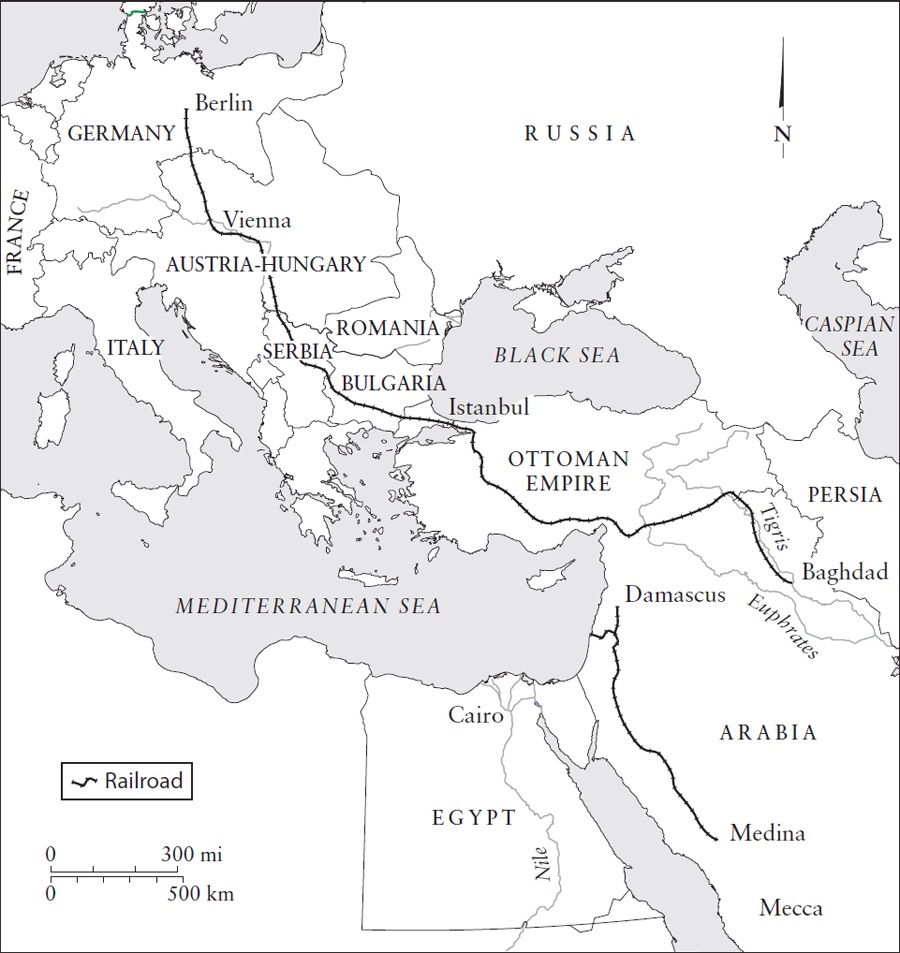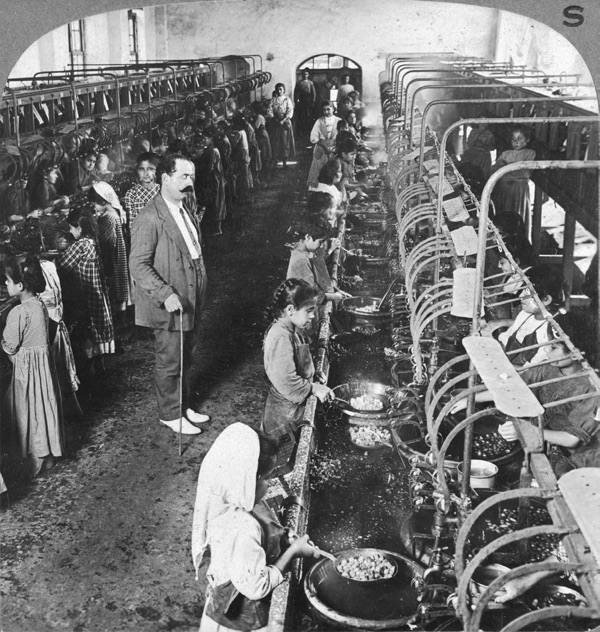Workers and Nationalists in Egypt, Mount Lebanon, and the Ottoman Empire in the 19th Century
The reforms initiated by Mehmet Ali, the Ottoman sultans, and the Qajar shahs were not the result of popular pressure. No rebellions or rogue actions were large or strong enough to truly challenge their governments; the Europeans were certainly banging on their doors by the early 19th century, but no action was sufficient to threaten the integrity of any of these states. Yet, as seen throughout the Ottoman Empire, many were looking for new ways to make money and gain local authority, while Sultan Selim III tried to reform the Ottoman military before being stopped by Janissary opposition.
European governance, society, and economic influence provided tantalizing new avenues for social and political change for those gaining access to these new opportunities. Once instituted, the reforms created a snowball effect, whereby the initial goal of reforming the military created the need for constructing associated institutions, which in turn produced stakeholders for the type of Westernized modernity that came along with the new institutions. Those stakeholders pushed for the reforms to spread more widely so that old elites and institutions could be replaced with the new and modern. Many found themselves working in new jobs; they frequently organized to fight for rights they never needed before.
These changes had unintended consequences for state leaders and those being swept up into the new institutions. The imperial machines still depended on intermediaries, but now the intermediaries increased in number and in the roles they could play. The timariot, mültizam, and religious clerics no longer had sufficient numbers or quality of skills necessary for the tasks being undertaken by state agencies. To conscript peasants into the military, monopolize cash crop exports, collect taxes for the central treasury, and standardize educational curricula, the intermediaries needed to be educated in the new administrative practices and fully embedded in their societies so they could identify the resources to be collected for the state. No longer could the empires rely on professional armies and administrators recruited from outside and trained as cadres separate and above society. Local landholders, merchants, and tribal shaykhs offered their services to their states because they could bring along members of their networks established in the provinces and the tribesmen who followed them in village and desert regions.
The state had to grant the new intermediaries additional authority to supervise and guide the people within their networks and tribes. In return for these services, state leaders had to recognize that these men were not just intermediaries but local notables. The most common title for this group in the Arab areas of the 19th century was a‘yan (notable). The members were no longer merely tax farmers collecting revenues once a year but respected local authorities who could collect resources for the state and provide jobs, schooling, and loans to their allies from within the burgeoning state realm.
The traditional Ottoman reliance on divide-and-rule policies designed to forestall the emergence of a lineage that could challenge imperial legitimacy still paid dividends since none of these new notables sought out imperial authority. However, under the new conditions they could establish family lines that built up wealth and power over many generations in their home provinces, with networks that often included profits earned from land, commerce, manufacturing, and positions in local state governments. The 19th-century state required so many services from these notables that they had to be allowed to acquire local aristocratic privileges in return for providing as many resources to the state as possible.
But these new notables were not the only beneficiaries of the new reforms, nor were they the only group affected by them. In many regions, peasants registered the land they had worked for generations; in other areas they became sharecroppers or tenant farmers for large landowners. While soldiers conscripted into the Ottoman and Egyptian armies had maimed themselves to avoid military service at the beginning of the 19th century, their grandsons at the end of the century were demanding more rights of promotion within the military ranks.

Workers in the new railways and telegraph companies across the Middle East were among the first to organize unions to strike against poor working conditions and low pay. Women in Lebanese silk factories went on strike simultaneously; those women attending foreign missionary schools across the region were among the first to publish magazines addressing women’s issues in the new societies forming around them. The magazines and newspapers that sprouted up in all the major cities included articles relating the history of the Arabs, Turks, and Armenians; they also all worked to standardize a language that everyone within the nation could speak.
Out of this work came the first stirrings of national identification and activism, complicating the already ambiguous definitions of Ottomanism put forth by Ottoman state leaders at the end of the 19th century and making Egyptian opposition to British colonialism a national cause. While these groups sought to construct new identities for themselves, they drew a line between those people who belonged and those who did not. A series of conflicts erupted throughout the century pitting newly defined national groups against each other; Islam, Christianity, and Judaism also came to be identifiers that acted as catalysts, prompting people to attack their neighbors. Everyone living in the Ottoman Empire and Egypt felt the effects of the reforms, and though most of the policies were imposed from the top down, many groups of individuals chose to organize themselves in new ways to tackle the problems and opportunities presented to them.
Peasant and Worker Rebellions in the Empire
The economic, educational, and political changes in Egypt and Syria did not affect the elites alone but also transformed society below that economic level, as peasants and urban workers found themselves faced with new challenges. The influx of European-manufactured products forced guild workers to move into factory settings; urban expansion created transportation jobs; and foreign missionary schools opened their doors to even the poorest of peasants. These transitions made some of the participants wealthy in their new endeavors, but more often than not the changes disrupted people’s lives.
Rural-to-urban migration in Egypt brought floods of peasants into Cairo, Alexandria, and the cities constructed to support the Suez Canal in the 1860s. By 1900, the largest employer in the country was the Egyptian State Railways, highlighting that the state was playing a new role in people’s lives. Migrants who came into the cities for the jobs and schools and were slowly transformed by the new cosmopolitan culture emerging in such major urban centers. They were joined by thousands of foreigners who wanted to be part of the larger Mediterranean trading and manufacturing zone expanding there; by 1907 almost 20 percent of Alexandria’s population was foreign born. In such cities people organized labor unions, women’s movements, and student political circles. Coffee shops provided venues for disseminating news; traveling theater groups told glorious tales of the Egyptian past and present. Much of this media was communicated in colloquial Egyptian Arabic, which helped create a shared sense of language, culture, and interests.

Cairo Cab Strike
Migration into cities provided the beginnings of a working class comprising tens of thousands of workers contributing in some aspect to the world economy. Quite quickly working conditions drove these workers to protest. After the British occupation in 1882, coal heavers in Port Said went on strike a number of times; the mostly Greek cigarette rollers in Cairo did the same in 1899 to demand better wages. Most of these strikes were only marginally successful, but one strike shows the potential power these strikers held.
In April 1907, approximately 2,000 Cairo cab drivers went on strike and paralyzed the city. The catalysts were the expansion of the city’s tramline, with the potential to detour business away from the cabs, and a campaign by the British Society for the Prevention of Cruelty to Animals to regulate how the horses used in the cab trade were treated. No records exist about how the drivers organized the strike, but the institutions readily available to them in the city, such as coffee shops, afforded easy means for disseminating knowledge about the strike and for rallying supporters. The impact of the strike was so great that after only one day, the government acceded to the strikers’ demands and eased restrictions on the use of animals. The high number of participants certainly played a role in this success, but many new newspapers in Cairo also carried the story, making it a far larger issue than the strike of just one group of workers. With success came imitators, and in the following weeks silk weavers, butchers, domestic servants, and other groups went on strike.
Damascus Textile Strike
In Damascus, cheap English textiles began to compete with Damascene products as early as the 1840s. While producers of expensive textiles could maintain their market share, those producing less exclusive products found themselves competing with cheap imported Manchester cotton. Guild masters could not keep newcomers out of the industry; anyone with money to buy machines and open a factory could potentially enter the newly competitive world of textile production. Masters could not protect their dependents because of the competition from Europe and from those local merchants who invested in textile factories. Spinners lost their business almost completely because the importation of new machines obviated the need for their work. The result of these changes was a breakdown in the guild structure that had guided and controlled textile production for centuries.
In the past, the guilds relied on personal relationships between members to facilitate cooperation; the guild structure was designed to protect all its members by maintaining quality, prices, and output. Except in periods of political or economic stress, the journeymen did well enough economically to sustain themselves. Under the new conditions, apprentices and journeymen could no longer rely on steady work within their guilds.
RAILWAYS
The first railway line in Egypt, between Alexandria and Cairo, opened in 1856, and new lines were extended along the Nile Valley, largely with British investment and technical expertise. In the 1860s, railway lines began to traverse Anatolia and the Balkans. In 1883, Istanbul became the southernmost terminus of the famed Orient Express, allowing rail passengers to travel from London to the Ottoman Empire and then throughout the Middle East. More than 2,600 kilometers of track existed in Egypt and 7,500 kilometers in the remaining Ottoman territories by the turn of the 20th century. On the eve of World War I, more than 13,000 people worked for Ottoman railroad companies, and about half of all products moving through Syria and Anatolia went via railway. Architectural gems such as Sirkeci Terminal in Istanbul (1890) and the Hijazi Railway Station in Damascus (1913) heralded rail lines as a symbol of Ottoman modernity and grandeur.
British, French, and German companies received most of the concessions from the sultan for building railways in the late 19th century. By World War I, the Ottoman government had invested only 10 percent in railways. The Great Powers competed particularly over the concession for the Baghdad Railway, designed to connect Baghdad with Basra and the Persian Gulf. A German company received a concession in 1903, and over the next decade Germany and Britain negotiated for rights of transport throughout that corridor.
The Hijazi Railway, the only line built solely with Ottoman financing, opened in 1908. Funds came from the treasury, the sultan and grand vizier, civil servants, and Muslims, making it also a pan-Islamic project. European contractors performed the most skilled work, but up to 10,000 Ottoman soldiers laid the rail bed and built much of the infrastructure in return for having their conscription contracts reduced from seven to five years. The line carried Muslim pilgrims along the 1,300-kilometer route from Damascus to Medina for the annual hajj and brought Islam’s holiest sites under the direct control of Istanbul. The railway never reached Mecca as initially planned, but extensions into the grain-growing region of the Hawran in southern Syria and to Haifa on the Mediterranean coast added 2,000 kilometers to the line before World War I.
Faced with diminishing incomes, the journeymen in early 1879 chose to organize with their colleagues across the industry in the hopes that their complaints would be heard. After a four-week work stoppage by 3,000 journeymen, the masters agreed to rescind the proposed wage cut. Subsequent strikes were not so successful, but their continuance shows that workers no longer felt obligated to the masters or merchants controlling their economic lives. The Damascene textile industry eventually adapted to local and foreign pressures by producing cheaper products to compete with Europe or by choosing to maintain production of higher-end textiles that faced no such competition. Innovation, not the guild system, which had failed to maintain its influence under the new conditions, saved the industry.

Mount Lebanon Silk Workers
The silk industry in Mount Lebanon created wealth for large landowners and merchants involved and for peasants who found ways to take advantage of the opportunities offered. Money for investment could be earned and borrowed from a number of different private venues. It could be made through the cultivation of new mulberry trees or the opening of factories for weaving silk thread. For others, jobs with foreign consulates, at the new hotels along the Beirut-Damascus Road, or in merchant houses at the port, provided the investment cash. The factories primarily employed women, while the men of the families typically stayed home to work the family land and, in many cases, to tend to the new mulberry trees.

By one estimate 12,000 unmarried women were working in the Lebanese silk industry by the 1880s. By the 1890s, they had also begun to organize and strike for better pay and conditions. Increasingly, these strikes began to show results as women’s demands for better pay and working conditions were slowly met. With the new earnings, paired often with the linguistic skills learned in missionary schools, thousands of Lebanese Christians immigrated to the Americas in the 50 years prior to World War I. The money sent home or brought back when they returned provided new lifestyles for these immigrants’ families. They bought land and the luxury goods now readily available throughout Mount Lebanon via the port of Beirut.
Over the long term, these changes transformed the social hierarchies that had been present in Mount Lebanon for centuries. Before 1860, elaborate rituals and control over local resources constructed boundaries between elites and peasants. In the post-1860 period, cash could be earned by people well below the elite level, and that cash had the potential to buy middle-class homes and lifestyles. No longer could the elites hold themselves above those who served them. So many avenues to earning cash presented themselves that a peasant family could, in a couple of generations, buy not only the luxury items but also the educational credentials of the elite. Feudal dependencies that had marked many of the relationships in Mount Lebanon could not be sustained in this fast-moving economic and cultural milieu.